ANSWERS TO QUESTIONS IN THE KOSCHEY QUIZ from 11/12/2009.
1. TO BURN, A BULB NEEDS EL______ (whole word)
E l e ktricity.
2. “Hippopotamus” means: swamp pig,
water horse
, dry whale?
Water horse.

Although hippos spend most of their lives in water, they are poor swimmers. In most cases, they do not swim, but move along the bottom of the reservoir on foot. For which they received their scientific name - hippopotamus, which translated from Greek means “water horse”.
3. A man who practices ballet is called a BALLER? Not really
No.
Do you know what ballet dancers are called? That's right, ballerinas. And ballet dancers are called that - a ballet dancer, or a dancer, because There is no word for ballerina in Russian!
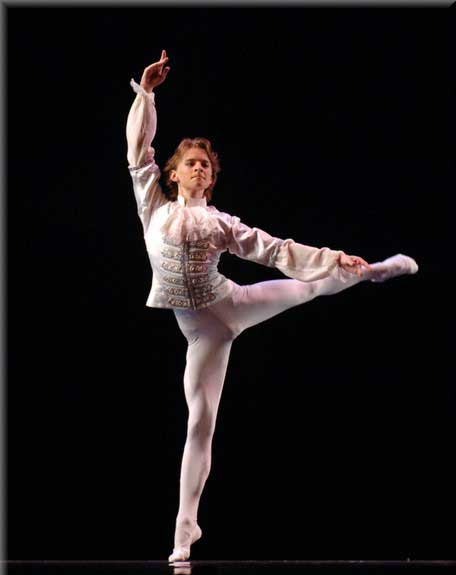
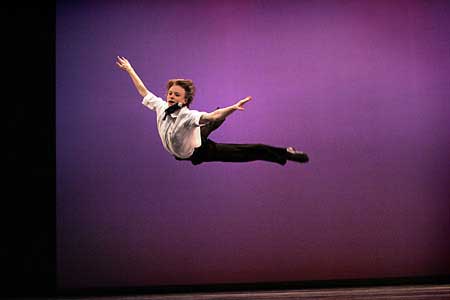
4. Is there a country called OCEANIA? Not really
No.
Oceania is not a country, but a region - that is, simply the general name for the world's largest collection of islands (about 10,000 islands) in the central and western parts of the Pacific Ocean. But Oceania cannot be called a country, since the islands included in this concept are themselvessovereign states.
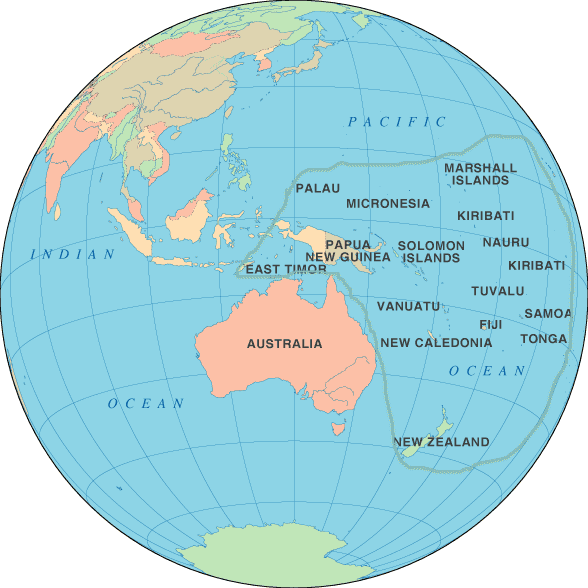
The total area of Oceania is a million square kilometers! The largest islands of Oceania are New Guinea and New Zealand. Most of the islands of Oceania are resorts of fabulous beauty and climate.



By the way, when you are asked to name parts of the land, you should not say “Australia”, but correctly - “Australia and Oceania”. Otherwise, most of the globe will remain unaccounted for!
Conversation between two little girls:
- An auntie in ballet is called a ballerina. Do you know what the uncle is called?
- No, but how?
- Ballerina!
The life of men in ballet is very closed. For example, it was much easier to write about ballerinas - you can find many articles about problems and successes, there are a lot of statements and memories on the forums. But here are the ballet men...
No, well, the problems of ballerinas also concern them fully: injuries and occupational diseases, hard labor and complete immersion in the profession, and, as a consequence, unsettled destinies, poor health, etc. But at the same time, there is a huge number of rumors and fables around this profession, There is probably nothing like this anywhere else. Ballet dancers are brought to the point that when they first meet, they try not to talk about where and who they work for... And the wives of dancers do not like to talk about this topic.

Here, for example, is what the author writes on one of the forums: nickname ballet: "...I say as casually as possible: “My husband is a ballet dancer.” Alas, no matter how many times I tried to immediately change the topic of the conversation, nothing worked. After people found out where my husband worked, they gave me a verbal interrogation, bombarding me with the most ridiculous questions: “Yes?..”, “Wow, how interesting!..”, “Where does he work?” (of course, in the theater, and where else can a ballet dancer work?) “What does he eat?” (special dry food for ballet dancers - I answer), “Does he play sports?”, “Are you jealous of ballerinas?”, or even cooler, “Does he get an erection during a performance?”, “Does he have you?” bisexual?"
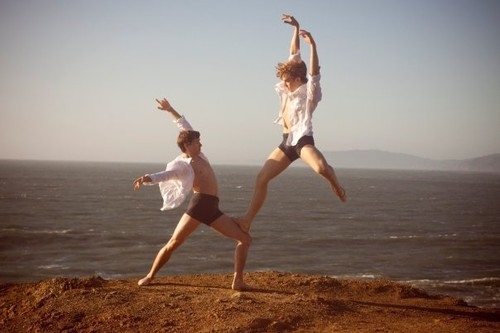
He is called the prince born on New Year's Eve.
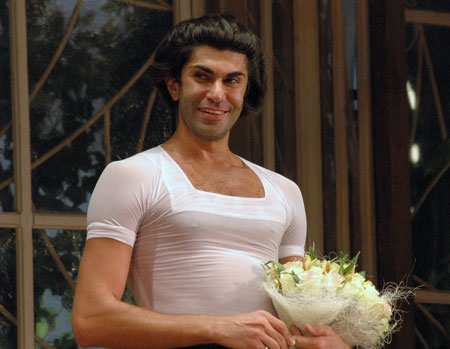
At the age of 10, a little boy named Kolya Tsiskaridze entered the Tbilisi Choreographic School,
![]()
at 13 he continued his studies in Moscow,

at 19 he was accepted into the troupe Bolshoi Theater, and at the age of 23 received the title of Honored Artist of Russia. His dance is technically impeccable, distinguished by spirituality and joy; in his art there is that measure of internal tension and external restraint that creates the majestic beauty of plasticity.

N. Tsiskaridze : “Curiosity brought me to ballet - I really wanted to move beyond the orchestra pit, because I was far from the mysterious backstage world and I’m not sure that if in childhood I had been shown the seamy side, the inner side of ballet art, I would have chosen this particular professional path. At the age of three I first got into the puppet theater, then into the opera and, finally, into the ballet. It seemed to me that it was all easy and simple, but in fact, oh, how much hard work must be spent to make the dancer’s movements light and easy. beautiful.
I was brought to the choreographic school at my insistence; no one in the family had anything to do with ballet."
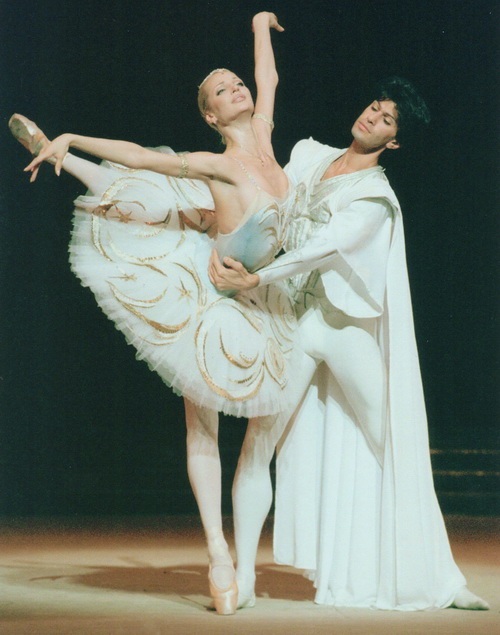
In the choreographic school, boys have a special position - and this is understandable, very few of them go there. This is probably why tuition fees at first are different for girls and boys:
For girls 100 thousand rubles. per year (10 thousand rubles per month);
For boys from 1st to 5th grade. - 50 thousand rubles. per year (5 thousand rubles per month).

Gene. Director of the Bolshoi Theater A. Iksanov: "The problem of men in ballet has existed for many years. Not only in our theater. Very few boys go to ballet - today it is becoming unprestigious. It is believed that a man must earn money, must do business, must be courageous. There is a danger that we we will lose a whole ballet generation. To solve this problem, we will be forced to renew the troupe not only at the expense of the Moscow Academy of Choreography. This year, by the way, they simply weren’t there - we’ll have to look for other artists. theaters and in neighboring countries."
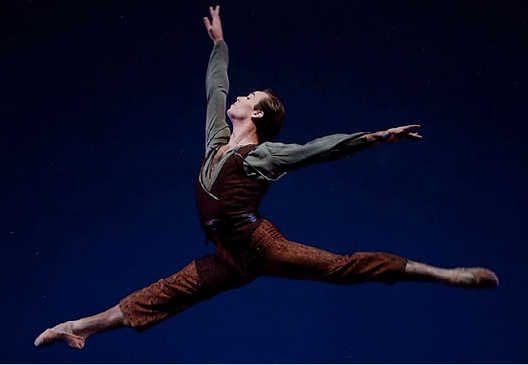
I found on one of the forums the memoirs of a blogger under the nickname Shock worker of Labor: "...When I was studying ballroom dancing, I had a partner (Azerbaijani boy) who moved amazingly, had good hearing and a sense of style, and who was also involved in martial arts and chess.
One evening, returning from regular classes, we came across his classmates (beardless contenders for the proud title of a man with an overwhelming amount of unrealized hormones), who began to ridicule his passion for ballroom dancing and loudly declared him a petka (pyatukho), for which they received an impudent slap in the face and ran to complain to the parents.

It was convened Parent meeting, at which the fathers (adult men, some of whom had higher education and were engaged in teaching, so to speak, raised future cultural citizens of the republic in their own and other boys and girls) declared my partner uncultured and an aggressor, and also expressed their authoritative opinion, in an amazing way which coincided with the opinions of their own offspring regarding the tendency towards homosexuality among all those who are in one way or another related to dance culture. The stigma was so loud that my partner quit dancing and went to study at another school, and, quite likely, will raise his sons in the same spirit of obscurantism and base concepts that suppressed his versatile nature. That’s how they become either gay or fools.”

Sergei Filin, artistic director of the ballet troupe of the theater named after K.S. Stanislavsky and Vl.I. Nemirovich-Danchenko:"... In general, we see fewer and fewer men. Men are disappearing as a species, and in ballet even more so, in ballet world the man is degenerating. What can be said about men's dance if in most choreographic colleges and schools in the world there are 2-3 boys for every 10 girls? And by the time it is time to enter the world of art, the theater and take up some positions, out of the three there is only one, or even not a single young man left.

If you come across talented men today, they are like diamonds; Such artists, of course, exist in many theaters around the world - I won’t say that in all of them.

How was Soviet ballet different? There was a huge amount of talent. A fierce competition was held, and the selected children were geniuses even before they started working with them. And when they graduated from college, they really became stars and got into the Bolshoi and Mariinsky Theaters.

The circle of strong dancers has become very narrow, and today the real great artists can be listed on one hand. If earlier at the Bolshoi, the Mariinsky Theater, the Paris Opera, and Covent Garden there were many dancers who had texture, had excellent technique, and had a bright personality and intelligence, today this circle is narrowing. And if stars appear, they are in great demand, they are invited to all theaters, they are literally torn to pieces.
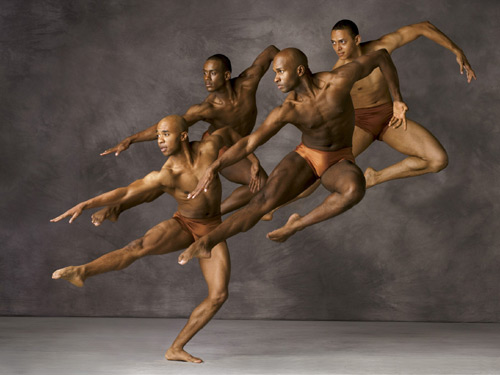
At the beginning of the 19th century, Western society developed a negative view of male ballet. And the strongest stereotype that sits in the brains of people all over the world and is impossible to get it out of there is that men in ballet are all gay. In addition, they run around the stage all day, groping both men and women, and this is pure pleasure! You don't have to work hard in a mine for 12 hours!
Meanwhile, this is a profession in which physical activity and creativity go hand in hand.

At the beginning of the 19th century, romanticism was in fashion and the focus of ballet shifted towards ballerinas; the dancer gradually disappeared into her shadow. The ballet turned to folklore, legends, myths and superstitions for inspiration. Nymphs and sylphs, innocent maidens, etc. appeared in it. The dancer was thus demoted to the role of the ballerina's ferryman. It was only to highlight her beauty and talent. Women dominate ballet for the first time in history. The romantic content of the performance is focused on the ballerina, pushing the dancer into the background. The audience wanted to see the ethereal, airy grace of the ballerina.
And the teaching of technique was addressed more to ballerinas. Less and less less than a man trained in ballet. By the mid-19th century, the number of men studying in professional ballet schools in Western Europe had declined sharply. This shortage forced ballerinas to play male roles. This practice of taking on roles intended for dancers of the opposite sex was called travestie dancing.
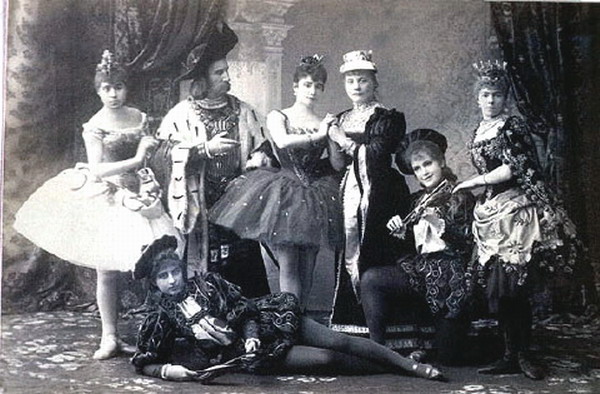
For several decades, the pas de deux (“dance for two”) was danced by two ballerinas (one of them a travesty).
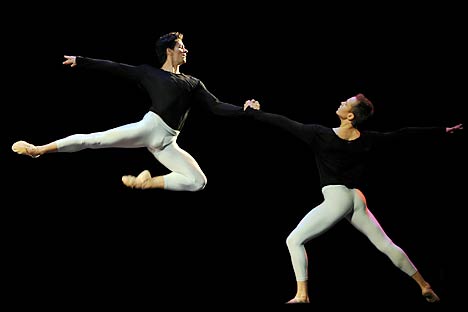
The audience again wanted to see male dancers, although prejudice in society was still not eliminated. However, it has not been eliminated even now.
Rudolf Nureyev changed a lot in ballet, proving that a man can also be the center of attention. And our great choreographer Yuri Grigorovich sometimes divided the accents equally in performances, and sometimes brought men to the fore. But there were real men's dances there!

A common problem for ballerinas and dancers is constant injuries.
Sergei Flyagin, musical theater ballet soloist : “In ballet it is difficult to avoid injuries. The ligaments are not made of iron and cannot always withstand heavy physical loads. Men often have pain in their backs, arms, and shoulders. Girls in ballet have a certain weight limit, but physical activity still takes its toll.”
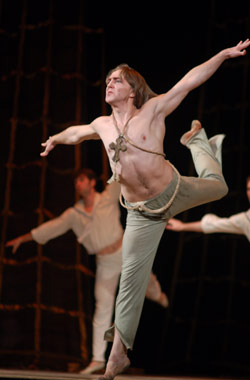
IN Soviet time ballet dancers traveled abroad, which means they were the elite of society. Therefore, ballet men were considered eligible bachelors, and the children of academicians and party officials dreamed of ballet girls. Today it is the low-paid working class. Well, yes, of course, such artists as Ivan Vasiliev, Osipova, Tsiskaridze, Alexandrova - they have a reputation as stars. But everyone else?..
And finally, a letter from a choreographic school student to the president:
Hello, dear Dmitry Anatolyevich. My name is Alexander, I am writing to you from Ufa. At the moment I am a student at a choreographic school. I turned 18 in February 2009. I graduate from college on May 30, 2011. They don't let me finish my studies. And, having received a diploma, I could work in a military ensemble. And if you serve in the army, then in very few ensembles, and especially in theaters, they are hired because the ballet dancer’s physical fitness has been lost. Army for Professional Dancers is only compatible with military ensembles. There is even an expression among dancers: “Going to the theater is like going to the army.” And they call up all the dancers, so it turns out that 7-10 years are wasted. Help me solve this problem and, if possible, help me solve mine, please.
Doctor and... doctor? Professor and... professor? Ballerina and...?
Probably everyone has come across a situation where it was necessary to somehow name a woman who received the profession of an engineer or doctor, or who won the title of master of sports. Engineer? Doctor? Mastersha? Of course, all these names at once hurt your ears, because they are grammatically incorrect. In Russian it is customary to speak in such cases engineer Svetlichnaya, master of Sport Ivanova, minister Kuznetsova, police lieutenant colonel Artemyeva.
There are words that are used in the masculine form even when they serve to designate female persons. This is due to the fact that until the beginning of the twentieth century, most specialties, professions, and positions were occupied by men, so there was no need to use separate words to refer to females. Of course there were words engineer, general's wife, doctor's wife, professor's wife etc., but they meant wives by husband's profession, and not a female person engaged in this profession. Later women began to successfully master specialties that were previously considered masculine, and the language immediately responded to this with the appearance of paired feminine gender correspondences.
Please note that according to the rule, feminine nouns with the meaning of a female person are formed from masculine nouns. This is how many feminine words came into the language.
Writer - writer.
Singer – singer.
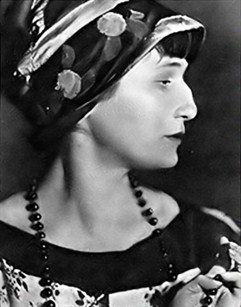
Actor – actress.
Tractor driver – tractor driver.
Journalist - journalist.
Scout – scout.
Educator – teacher.
Teacher - teacher.
Performer – performer and others.
The formation of such pairs can be observed especially productively in the sports field.
Gymnast – gymnast.
Jumper – jumper.
Champion – champion.
Record holder – record holder.
Basketball player basketball player.
Football player - soccer player.
Tennis player – tennis player.
However, most masculine words used to denote a profession performed by both men and women do not have a corresponding feminine pair - only a masculine word is used for both genders.
The number of such words is quite large: linguist, secretary, builder, accountant, astronomer, agronomist, physician, doctor, geologist, announcer, conductor, rector, editor, director, director, professor, proofreader, inspector, instructor, chairman, master, lecturer, composer, captain, operator, minister, president, philologist, mathematician and etc.
Please note that the definitions for such words are always used in the masculine form, but the verb is used in accordance with the gender of the noun.
For example:
Famous composer Lebedev wrote a new symphony;
Famous composer Lebedeva wrote a new symphony.
It is also necessary to take into account that in official business speech, in solemn, emotionally uplifting speech, predominantly masculine words are used, even if there is a correspondence in the feminine gender. For example, Valentina Tereshkova, the world's first female cosmonaut, is usually called brave astronaut; R. Sadykov - p the first professional conductor from Kazakhstan, A. Pakhmutov – famous composer, Anna Akhmatova - an outstanding poet. By the way, Anna Akhmatova herself really didn’t like it when people called her poetess, claiming that she is exactly poet.
In the Russian language there is also such a phenomenon as lack of masculine gender in the names of professions traditionally considered feminine: nanny, laundress, typist, manicurist, housekeeper. Even if paired names for these professions are formed, they look comical, for example nannies. Such paired names may also have other meanings, which prevents the widespread use of such names. For example, a couple poultry house - poultry house. Word poultry house, according to the dictionary of S.I. Ozhegova, has the first meaning – “ poultry house" and the second meaning is " poultry worker».
From this point of view, the couple’s story is interesting, by the way ballerina. In modern Russian this word has no equivalent in the masculine gender, but the reason for this is not that ballerina is a female profession,  but that, according to the rule, the names of female persons are formed from masculine nouns ( husband - wife, Belarusian - Belarusian).
but that, according to the rule, the names of female persons are formed from masculine nouns ( husband - wife, Belarusian - Belarusian).
Initially, there were other names for this profession: ballet dancer - ballet dancer, a pair formed in accordance with the laws of Russian word formation, but in the second half of the 19th century the word came ballerina, taken from Italian, because it was Italian ballerinas who dominated the Russian stage at that time. There was no pair for the new word, so phrases are used ballet dancer, ballet soloist and etc.
Try to choose the right words when naming female and male persons by profession, and we will try to help if you have any questions.
Good luck to you and the beautiful, literate, rich Russian language!
Still have questions? Don't know how to match the masculine gender to the word "ballerina"?
To get help from a tutor, register.
The first lesson is free!
www.site, when copying material in full or in part, a link to the source is required.
The woman is a ballerina, but what about the man? Ballerina? o_o
- dancer
- ballerina...
- Of course - BALERO!
- person involved
- A man who practices ballet is not called a BALLER.
Do you know what ballet dancers are called? That's right, ballerinas. And ballet dancers are called that way - ballet dancer, or dancer, because there is no word for ballerina in the Russian language!
A little history.
In the second half of the 18th century, ballet companies consisted entirely of men, among them the Italian-French virtuoso Ga, famous for his skill and jumping. Despite this, women also contributed to the development of ballet technique. An example of this is the German ballerina Anne Einel, who was the first (female) ballerina who was able to do a double feast. - ballerUn I once gave a blowjob to such a guy. very sweet boy
- Ballerina, probably :))))
- Ballerina
- Let me explain - ballerina is a generally accepted designation for BALLET ARTIST.
While ballerOn and ballerUn are rather colloquial, playful, contemptuous names for male BALLET ARTISTS.
Men are called BALLET ARTISTS.
Even look on the Internet - Belerina is so and so... BUT Ballet Dancer Maris Liepa…. Not BalerOn and not BalerUn.
How is that
DO NOT CALL PINDOS PINDOS - they get offended (a real statement from our general in the former Yugoslavia) - balleron
- Ballerina.
- An artist, maybe also a ballerina’s partner
- Bolero
- Ballerina. Better just a dancer.
- Person involved, I agree with you, they wrote some kind of garbage
- Ballerina, dancer or cheerleader. How convenient for anyone.
We devoted the previous article to myths about ballet. Meet the continuation - 5 more of the most popular ballet misconceptions and their exposure!
Myth #6
You can dance right away in your new pointe shoes.
When the long-awaited moment finally arrives and the teacher allows her to buy pointe shoes, the little (or big) ballerina goes to the ballet store.
The consultant helps you choose the right pair of shoes, inserts, nickel stickers, elastic bands and ribbons. And now, the ribbons and elastic bands are sewn on, the “nickels” are glued, can we start studying?
Take your time, pointe shoes are not regular shoes, they require some preparation before you start practicing in a ballet class.
Each ballerina is individual, which means that each ballerina has certain features in the structure of her legs. This is why it is so important to take the pointe shoe selection process very carefully. But even when you have already chosen for yourself suitable model, sewed on the ribbons and elastic bands, prepared the “patch”, it is necessary to break the pointe shoes.
Just break it, with a real hammer. Ballerinas do this on their own, because no one can determine better than themselves how correctly and comfortably the shoes fit on their feet. The hammer is usually wrapped in a cloth (or a regular cotton sock), the pointe shoes are placed on a hard surface, and then the breaking process begins.
“The main thing is to take the hammer firmly :)”
Toe shoes should fit tightly on your foot, but at the same time give you the ability to dance, that is, the foot should bend. The main thing is to find ideal position: so that the pointe shoes fit comfortably, but also tightly enough. This is why it is so important to break your shoes properly. As you understand, this needs to be done carefully, constantly trying on pointe shoes. For the first time, you will most likely spend a lot of time breaking down the shoes, but you will determine exactly what the ideal pointe shoes should be for you.
There are many photo and video materials on the Internet with detailed instructions on the choice of pointe shoes, as well as on their preparation for ballet classes. Please read these materials carefully before purchasing new hard ballet shoes and before preparing them for classes: your health depends on it!
Myth No. 7
A man in ballet is a ballerina.
Another myth concerning ballet terminology and men in ballet. You yourself have probably heard this myth from people who have a very rough idea of ballet.
Indeed, a woman in ballet is a ballerina, but a man? So, a ballerina? Of course not!
It is correct to call a ballet man a dancer or ballet dancer. There are opera and film artists, drama theatre, and ballet artists - no exceptions. So feel free to correct the inventors of the ridiculous word “baller” and provide them with cultural education!
Myth #8
Dancing on your fingers is terribly painful.
The best way to learn something is to try it. IN in this case: try on pointe shoes. At least just put them on and listen to your feelings.
Of course, just trying on pointe shoes and dancing in them are completely different things. However, this will give you at least an approximate impression and feel of ballet shoes. Well, is dancing in pointe shoes really that painful?
Let's start with the fact that not a single qualified teacher will allow you to practice in pointe shoes if your feet are not sufficiently prepared. Strong legs- calves, feet, as well as a straight, strong back, “inserted” shoulder blades: this is the necessary “set” for starting pointe classes.
Typically, non-professional beginners need about a year, and sometimes even more, intensive classical training to gain sufficient training for finger training. Absolutely everything is taken into account: your physical abilities, complexion, individual body structure and even weight. Overweight amateur ballerinas better be very careful, because practicing on pointe shoes is a huge strain on the legs. Accordingly, the more you weigh, the more pressure on your legs, which can lead to undesirable health consequences.
We look at ballerinas - in the theater, on the Internet, on TV - they literally soar above the stage in pointe shoes. It seems so easy for them! But you, of course, understand what lies behind this ease: daily ballet barre, constant rehearsals, a huge amount of invested effort and labor. In addition, all professional ballerinas undergo a strict selection process when entering ballet schools. Only the best of the best, ideal in all ballet “parameters,” pass the gigantic competition and receive a unique opportunity to study ballet art professionally.
“Float on stage like a butterfly!”
With good physical preparation, as well as correct selection With pointe shoes, you will not experience the “terrible pain” that many ballet lovers like to scare. Also, if you listen carefully to your teacher, correcting your mistakes and shortcomings, then over time you will definitely dance “on your fingers”!
Today they really like to post photographs showing the ballerina’s legs - in beautiful satin pointe shoes and without them. As a rule, in photos without pointe shoes, your feet look scary: bloody calluses, a protruding bone, blackened nails. In general, a complete set of horrors. Of course, everyone who is not intimately familiar with ballet and who sees such a photo is shocked: is ballet really such a nightmare? The desire to try this art immediately disappears.
So, amateurs can practice ballet and dance in pointe shoes! And with pleasure! The main thing is to prepare yourself physically, choose the right pointe shoes and listen to your teacher most attentively. Then you will not be afraid of such horrors, which, by the way, only happen to professionals, and even then, quite rarely.
Myth No. 9
Ballet dancers wear very strange makeup.
If you have ever seen ballet dancers preparing for a performance, you were probably surprised by their makeup. Bright, absolutely unnatural - you definitely won’t go outside like this.
It's all about the special stage specifics. When you watch a performance from the auditorium, the actors are quite far from you, and theatrical lighting, scenery and costumes also play a special role. If an artist goes on stage without makeup, he will simply “get lost”; his image will not be holistic and harmonious.
The larger the stage and auditorium, the further the artist is from us. This means that his makeup should be brighter and more expressive. “Give character” - that’s what ballet dancers say. Make-up is the most important component in the image of each artist; one of the main tasks of ballet make-up is expressiveness. So while up close the makeup may even seem ridiculous, on stage it looks appropriate: expressive and organic.
Of course, theater make-up artists also have their own professional secrets. Let's share some of them.
When a ballet dancer dances on stage, he, like all living people, sweats. And sweat, as you know, is makeup’s worst enemy. To prevent makeup from smearing and being absorbed into the skin, make-up artists fix it by special means, for example, such as sandarach glue. It is applied on top of the finished makeup, holding it tightly and preserving the bright colors.
As you know, everything seems smaller on stage than up close. Therefore, in order to “give character” to the image, make-up artists Special attention pay attention to facial makeup. To further emphasize the eyes, use bright eyeliner on the lower and upper eyelids. This technique visually enlarges the eye. However, it is important to do soft shading, otherwise the eye may, on the contrary, become narrower. And this is not at all necessary, unless, of course, you are doing makeup for Chinese dance.
“Correct theatrical makeup is already half the success!”
Theatrical make-up artists keep a lot of such “secrets” and tricks in their arsenal. After all, not only beauty is important for ballet makeup, but also aesthetics, convenience and practicality. The most important thing is that the makeup does not interfere with the artist’s dancing and makes his image holistic, expressive and harmonious.
Myth No. 10.
Ballet dancers have no sense of humor.
For some reason, many people believe that ballet dancers do not know how to joke. Of course, the art of ballet is very serious, but this fact does not deprive ballet dancers of an excellent sense of humor.
There is even a special term - “greening the performance.” As a rule, “greening” occurs on the last performance of the season or on the last performance during a tour. Literally, “greening” means adding something to the performance that shouldn’t be there. The viewer, as a rule, does not notice such moments, but for many artists this becomes a real surprise.
Here shining example“green stuff”: in one famous theater the ballet “Corsair” was performed. The actors playing the role of the Turks decided to joke a little, and in the place where they were supposed to surrender to the corsairs, they went on the attack. The audience continued to watch the performance in full confidence that everything was as it should be. The actors playing the role of corsairs, to put it mildly, were perplexed, but pulled themselves together and supported the idea. Of course, everything then went according to the libretto.
Another funny incident. Ballet "Swan Lake", ball scene. The Jester comes out and suddenly, instead of his usual part, he begins to improvise in Russian folk theme. Let us remember that the ballet takes place in a fairy-tale country, the prototype of which is Germany. Spectators watch the ballet, believing that it is just such an original production. But for the artists and, of course, for the director of the play, this part was a real surprise.
When such “green shows” are organized, it is important to be sure that other artists will support them and will not get confused on stage. But a real artist must be able to improvise and find a way out of any situation!
As you can see, it is completely unfounded to believe that ballet dancers have no sense of humor. After all, humor in ballet is not just practical jokes, it is also very effective way“invigorate” the artists especially during long academic performances. Raise your mood, morale, give a positive charge - that’s what humor also means in ballet.
We have debunked 10 popular myths about ballet. As it now becomes clear, not everything turns out to be as they say. Ballet is a beautiful art, and if you decide to get to know it better, that's great!
Is there anything else you want to know? Write to us on the website or in groups social networks VKontakte and Facebook. We will be happy to consider all suggestions and cover topics that interest you in future articles!
Text author: Victoria Trubitsina
Illustrations: Rustam Khusainov









